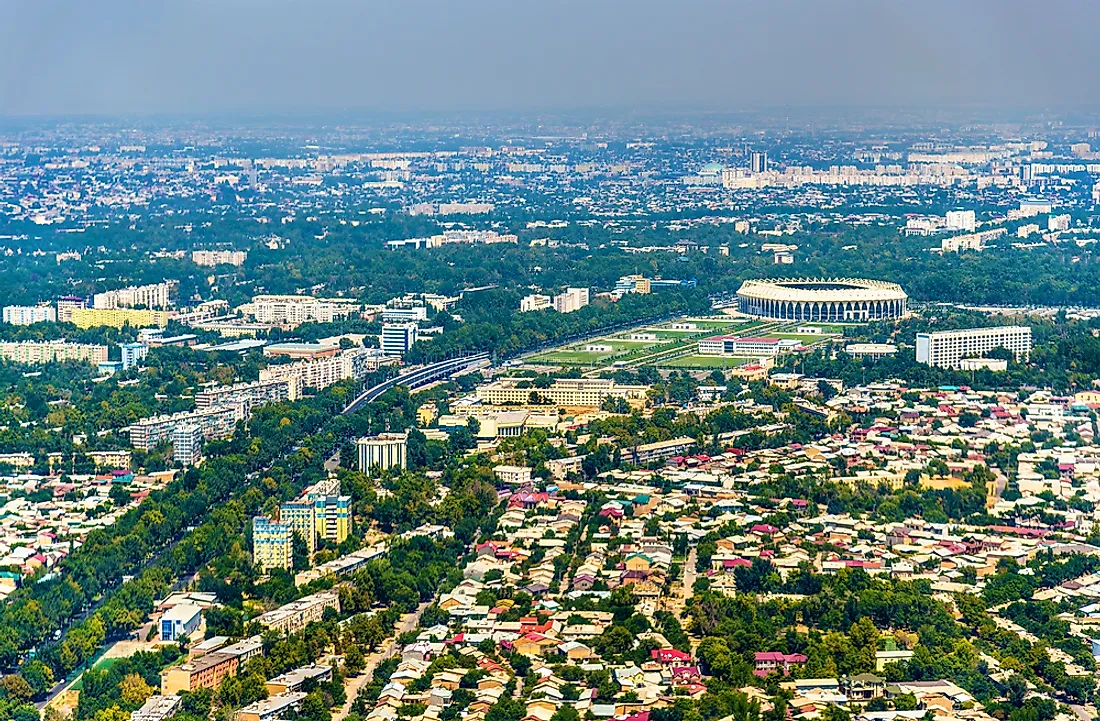What Is The Capital Of Uzbekistan?

Tashkent serves as the capital city of Uzbekistan which is found in central Asia. It is also the largest city in the country with a population of 2,309,300 according to a 2012 census. Tashkent is located on the road between Samarkand and Shymkent in a plain that is well-watered and is found to the west of the final Altai Mountains. The city sits at the River Chirchiq’s confluence as well as a few of its tributaries; it is constructed on deep alluvial deposits that reach up to 49 feet.
History of Tashkent
Before Islam found its roots in the city in the eighth century CE, the Turkic and Sogdian cultures profoundly influenced Tashkent during its early history. Following the destruction of the city by the Genghis Khan in 1219, Tashkent had to rebuilt and prospered due to the Silk Road. Tashkent was conquered by the Russian Empire around 1865. During the Soviet rule, the city experienced significant demographic changes and growth because of forced deportations from the entire Soviet Union. At present, Tashkent, as the country’s capital city, comprises of a multi-ethnic population where ethnic Uzbeks make up the majority of the population.
Name Evolution of Tashkent
Due to Tashkent’s long history, the city has had several name changes and religious and political affiliations. As an oasis on the River Chirchik, the city was settled by ancient people close to the foothills of the West Tian Shan Mountains. During the ancient times, the region comprised of Beitian which was most likely the summer capital of the Confederacy of Kangju. During the early Islamic and pre-Islamic period, the town was known as Chach; it is still referred to as Chach by the Shahnameh of Ferdowsi. The town was later known as Chashkand or Chachkand which means Chach City. The name eventually evolved to Tashkand with Tash meaning "stone" in the Turkic languages. The name Tashkent is a modern spelling of the word Tashkand, and it reflects on the twentieth-century influence of the Soviet Union as well as Russian orthography.
Modern History of Uzbekistan's Capital City
Being the capital of Uzbekistan, Tashkent is the most cosmopolitan city in the country. Initially, the city was known for its pleasant parks, plenty of mountains, and tree-lined streets up until the 2009 tree-cutting campaign initiated by the city’s local government. Tashkent has architecturally, economically, and culturally changed as of 1991 with new developments either superseding or replacing icons put in place during the era of the Soviet Union. The statue of Lenin, which was the largest ever erected, was replaced with a globe that features the country’s geographic map. Similarly, buildings that were constructed during the Soviet Union era have been replaced with new ones. The city comprises of a business district known as 'Downtown Tashkent' which contains the plaza building, a 22-story building that houses the NBU Bank, the International Business Center, and the Intercontinental Hotel. The Tashkent Business District is a special kind of district which was mainly created to develop large, medium, and small businesses in the country. Moscow News named the city the Islamic world’s cultural capital in 2007 because Tashkent consists of major Islamic sites and numerous mosques. An example of such significant Islamic sites includes the Islamic University. The city also holds one of the earliest written copies of the Quran known as the Samarkand Kufic Quran. The copy has been located in Tashkent since 1924.











